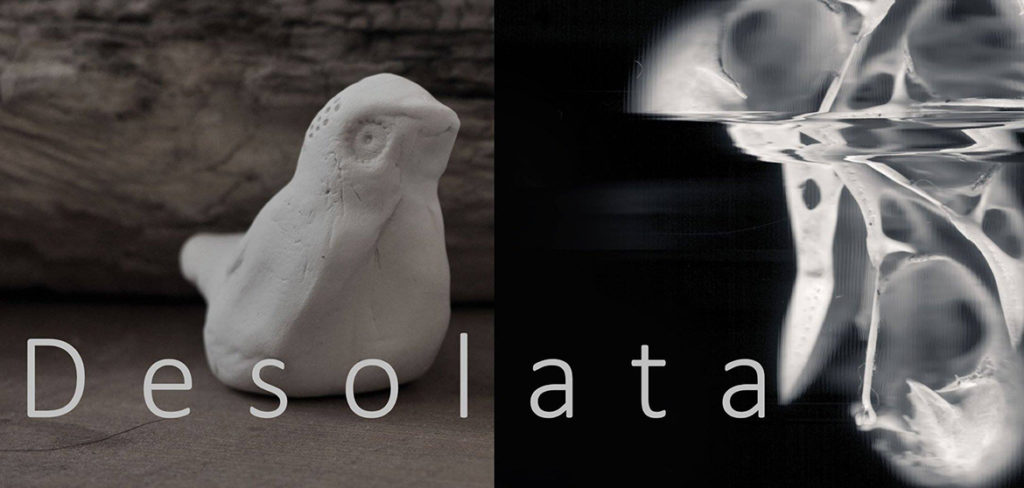
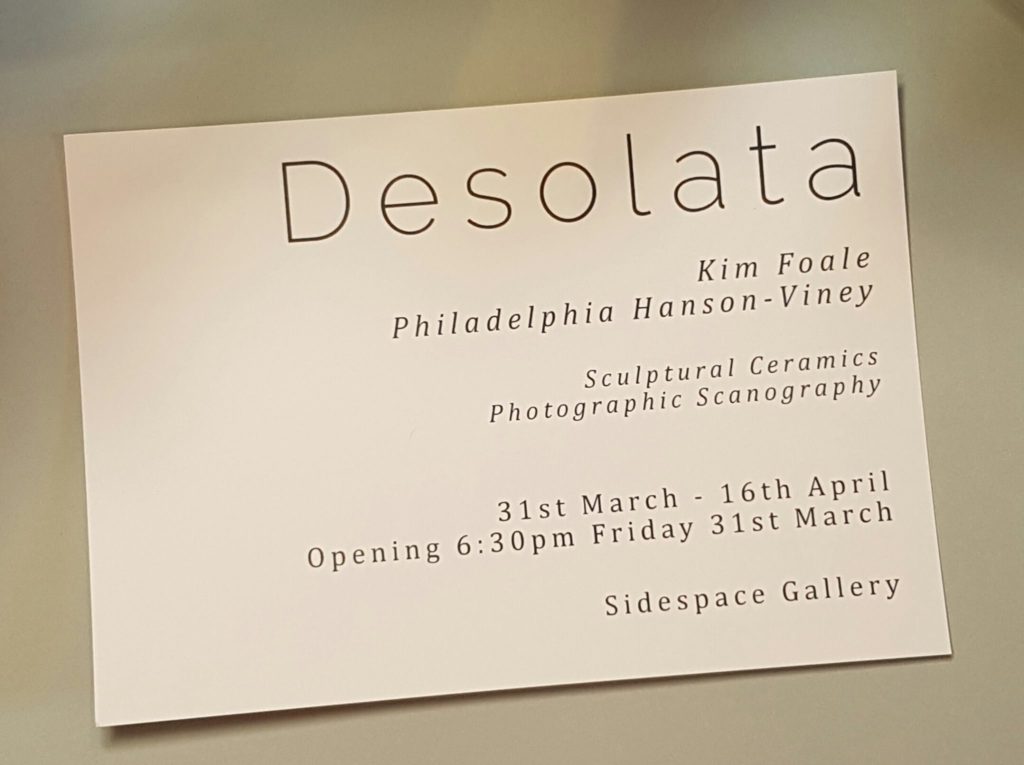
Desolata the exhibition, my contribution at least, was originally intended as a requiem for my trees. The Drought of 2015 had taken a heavy toll on my immediate landscape, with stringybarks dying en masse. The death of the trees was the final straw for my already fragile equilibrium and my mental health declined somewhat.
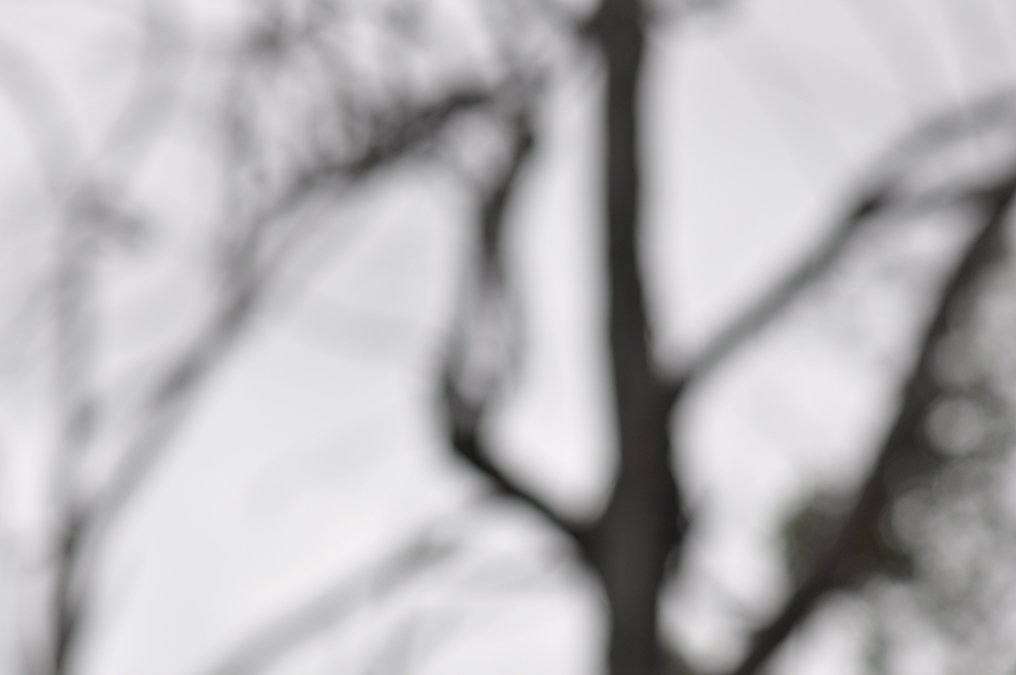
I see dead trees.
I saw dead trees and it hurt my heart.
I dreaded seeing that flash of orange on the hillside because it meant another tree had started to slowly die. Once a large tree, an anchor tree started to die, all the smaller trees around the anchor quickly died as well. A flash of orange became a slash of orange which then became a patch of nothing, as the bare limbs of the dead trees blended in with the messy visual landscape of the hillside. As the relentless summer drought wore on these newly dead trees changed to silver spikes. They spiked my heart with their emptiness and the sadness wore me down. I retreated from everyone and used my recent life saving surgery as a convenient excuse for my reclusivity. But really it was the trees, they were sad their connections to each other were being broken by the drought and in their loneliness they died. The sadness was palpable, I could taste it in the air, I breathed it in and became sad in solidarity.
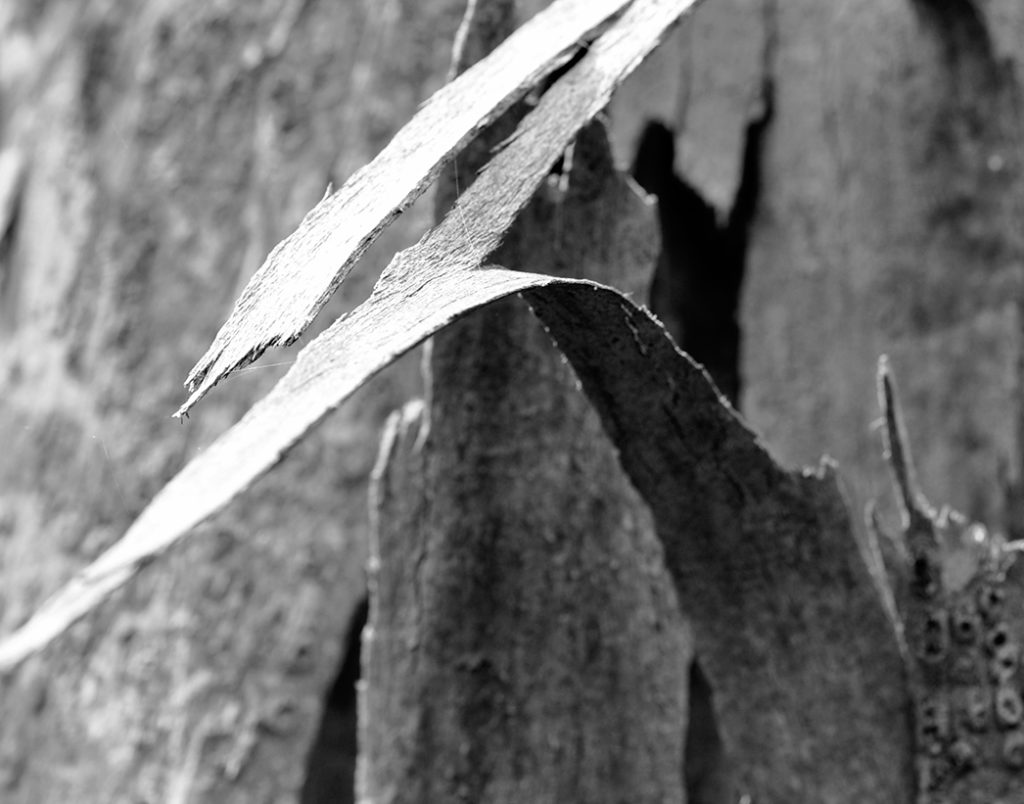
It was horrible.
Some trees and certainly my mental health were saved by the drought breaking rain last winter.
But with this landscape of ours there is always a catch, we had so much rain and the ground became so soggy in parts that some healthy trees fell over. Large, seemingly healthy trees, dying from too much water. *sigh*
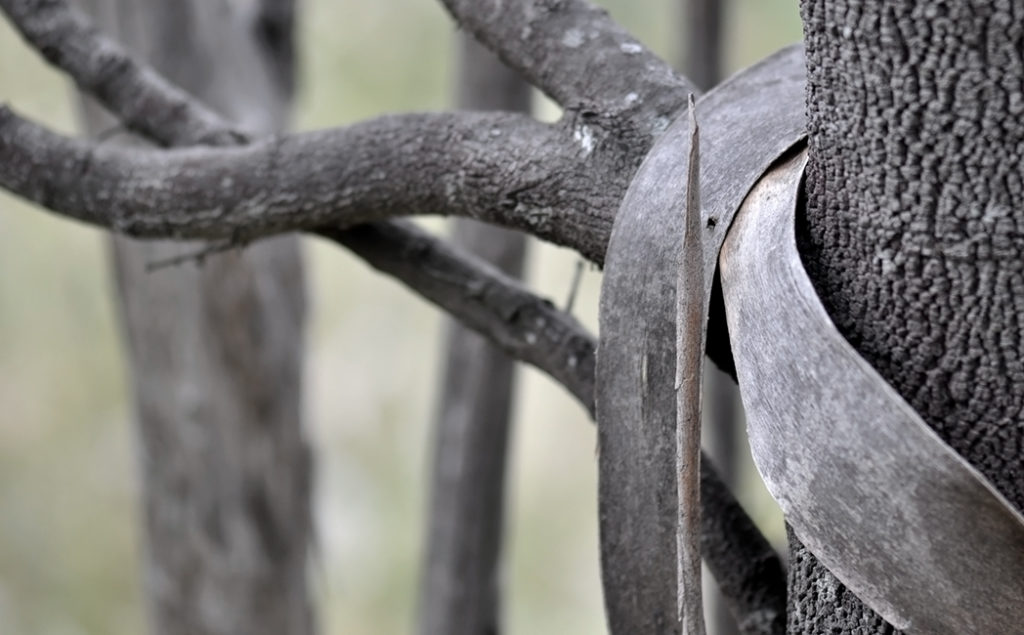
Desolata, a requiem for the trees, slowly evolved into what it is today, or what it will be on Opening Night on the 31st of March, a soft lament for the treeless birds.
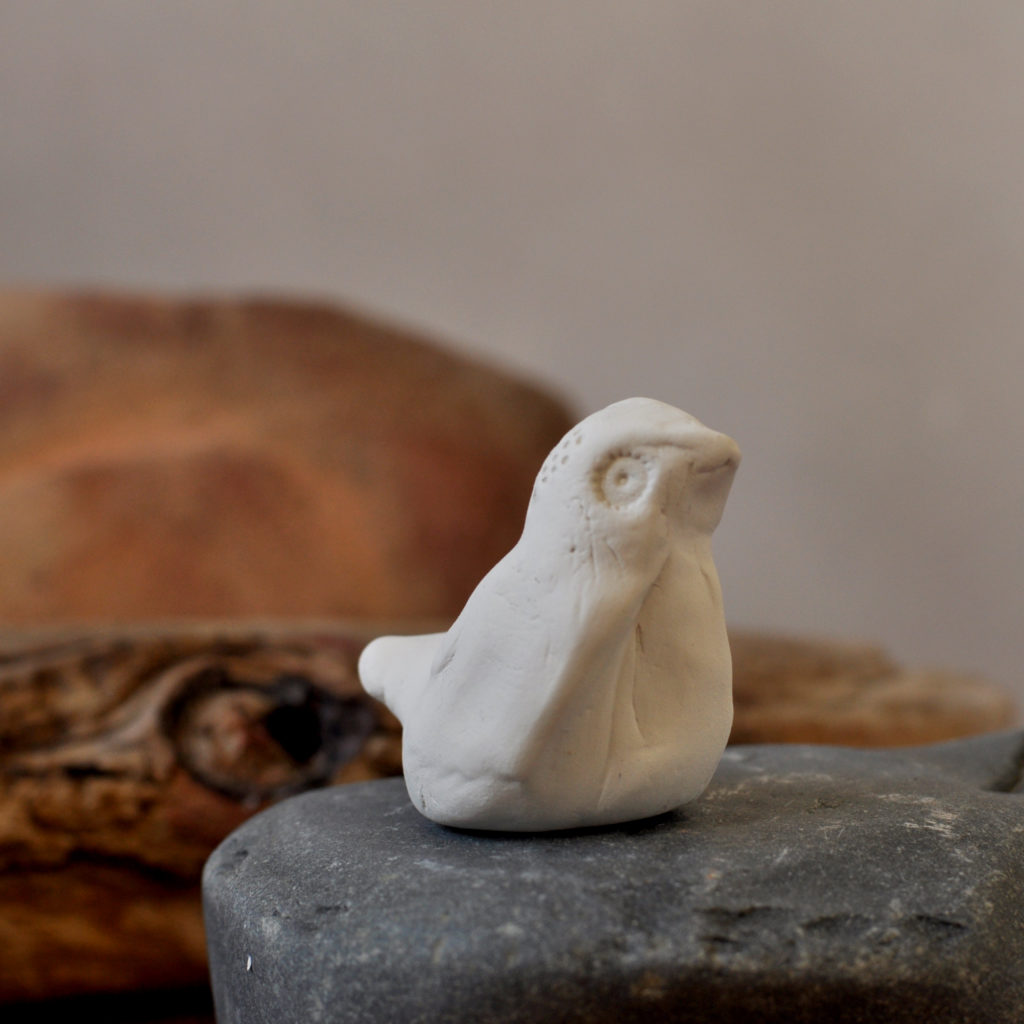
The making of the work generally gives me somewhere to put the sadness so that it does not seep into my every day life.
This time it was harder to start the work because I did not want to photograph the dead trees at all. I see things through the camera that I do not see when I am looking with just my eyes alone, other secrets are always revealed when I edit the images and it hurt too much to do the looking. I even went so far in my avoidance, asking a talented photographer friend to photograph the trees for me. He declined, simply stating that my photos were good and that I should photograph them myself. At the time I did not feel that anything I did was ‘good’ so Robin’s words were healing and I blew the dust off the Nikon.
I ventured down the hill into the bush with my camera in hand, finally prepared enough to look closely at the death I had been avoiding.
In order to heal you must examine that which ails you, I have learned that lesson.
I know that in order to move on from any sort of psychic injury, I need to allow myself to really feel the pain. Not a pleasant undertaking for an optimist at all, it is much easier to watch for butterfly shadows.
But, my dear internets, I was not overwhelmed by the death all around me, instead I was delighted by the signs of hope I found. Samwise Gamgee nodded at me from the back of my mind pleased that I had found my hope again. I was quite pleased as well.
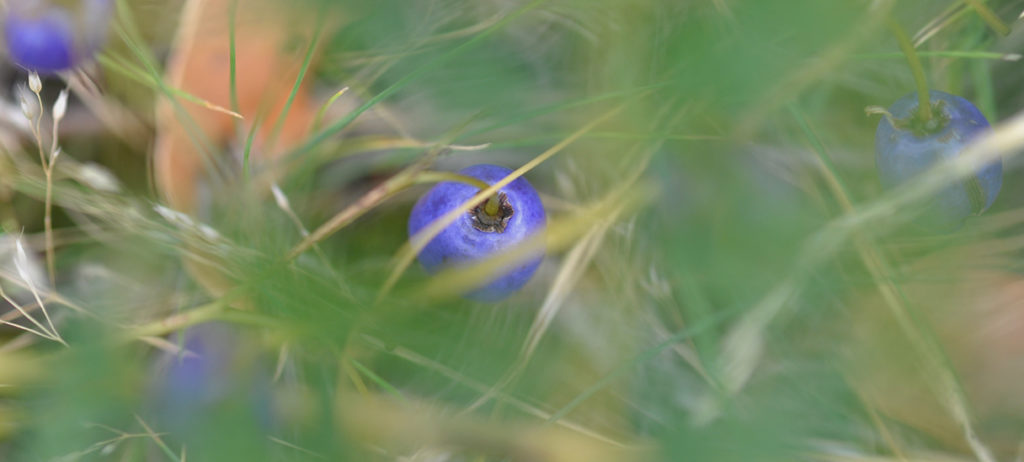
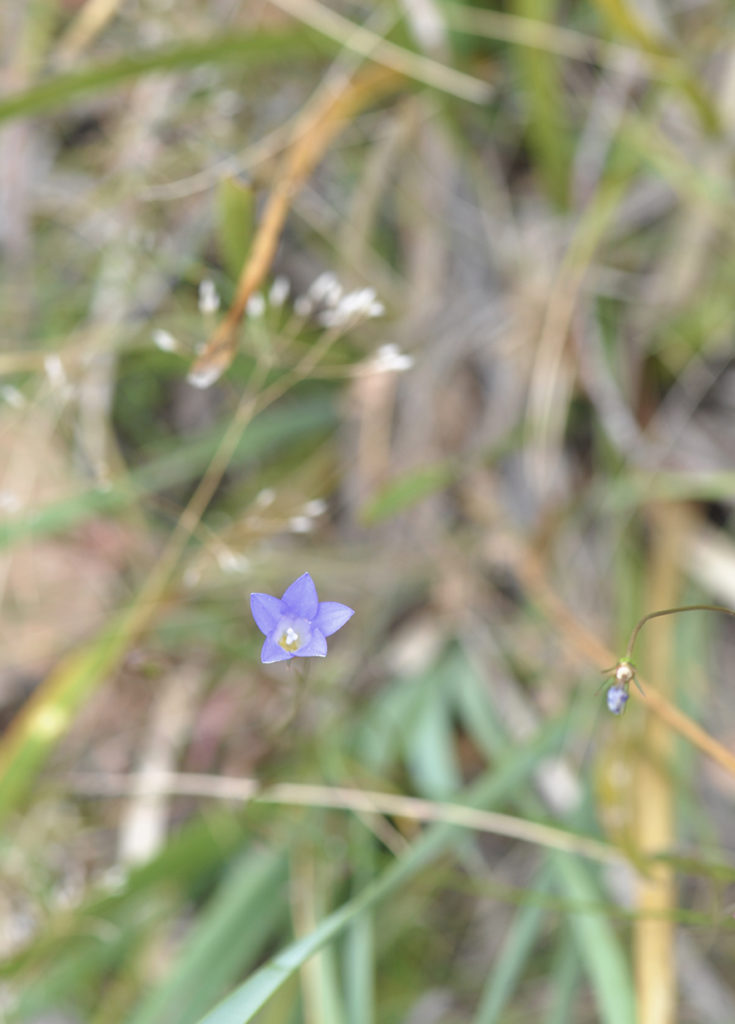

Comments on this entry are closed.
thank you for sharing. I am glad you are working through your sadness for the trees. I am glad you are sharing your words, and you are sharing your art….thank you for them both.
You write so beautifully, Kim. From the heart. Robin is right about your photographs.
Very powerful, your prose, poetry, and heartache …..poignant, and beautifully written
I am glad you took your own photos ……I agree with your photographer friend
You have, now, a rare collection of seasons and stories of death and resurrection, then, hope, about your trees, and home environment, which, one day, will make a wonderful volume for your children and grand children, and their children to pour over, and a beautiful legacy as well
The wisdom about healing and courage to face the “whatever hurts you” helps others, me, to do the same …….thank you, for sharing your heart